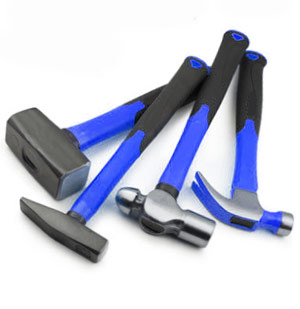Selecting the right splitting maul can significantly impact your efficiency and safety when splitting wood. With various options available on the market, it's essential to understand the key factors to consider to make an informed decision. This guide will walk you through the critical aspects of choosing the perfect splitting maul for your needs.
Understanding the Splitting Maul
A splitting maul is a tool specifically designed for splitting wood along its grain. Unlike an axe, which is intended for chopping wood against the grain, a maul has a heavy, wedge-shaped head that forces the wood apart upon impact. This distinction is crucial for those who regularly split logs for firewood or other purposes.
Key Components of a Splitting Maul
Before delving into the factors to consider, it's essential to understand the primary components of a splitting maul:
Head: The head is the heaviest part of the maul, usually made of steel. It has a wide, wedge-shaped design that helps split the wood.
Handle: The handle can be made from various materials, including wood, fiberglass, or composite. The handle length and material influence the maul's balance and ease of use.
Factors to Consider When Choosing a Splitting Maul
1. Weight of the Head
The weight of the maul's head is one of the most critical factors. It typically ranges from 6 to 12 pounds. A heavier head provides more force, making it easier to split larger, tougher logs. However, it can also be more tiring to use over extended periods.
2. Handle Material
The handle material affects the maul's durability, comfort, and shock absorption. The three primary materials used are wood, fiberglass, and composite.
3. Handle Length
The handle length influences leverage and control. Most splitting mauls have handles ranging from 28 to 36 inches.
4. Head Shape and Design
The head's shape and design can impact the maul's effectiveness. Look for a head with a wide, wedge-shaped blade that splits wood efficiently. Some mauls feature a dual-purpose design with a splitting face on one side and a sledgehammer face on the other, offering versatility for driving wedges.
5. Balance and Ergonomics
A well-balanced maul with an ergonomic design reduces strain and increases efficiency. The balance point should be slightly towards the head, providing enough weight to split the wood without making the maul too top-heavy. An ergonomic handle with a comfortable grip ensures better control and less fatigue during use.
6. Durability and Quality
Investing in a high-quality splitting maul ensures longevity and better performance. Look for mauls from reputable brands known for their durable construction and high-quality materials. Reading reviews and seeking recommendations can help identify reliable options.
Choosing the right splitting maul involves considering several factors, including the weight and material of the head, handle material and length, head shape and design, balance, ergonomics, and overall quality. By understanding these factors and how they impact performance, you can select a splitting maul that suits your needs and makes wood splitting more efficient and enjoyable.
Investing time in research and selecting high-quality splitting mauls will pay off in the long run, providing you with a reliable tool that makes your wood-splitting tasks easier and more effective. Whether you're a seasoned pro or a beginner, the right splitting maul can make all the difference.




